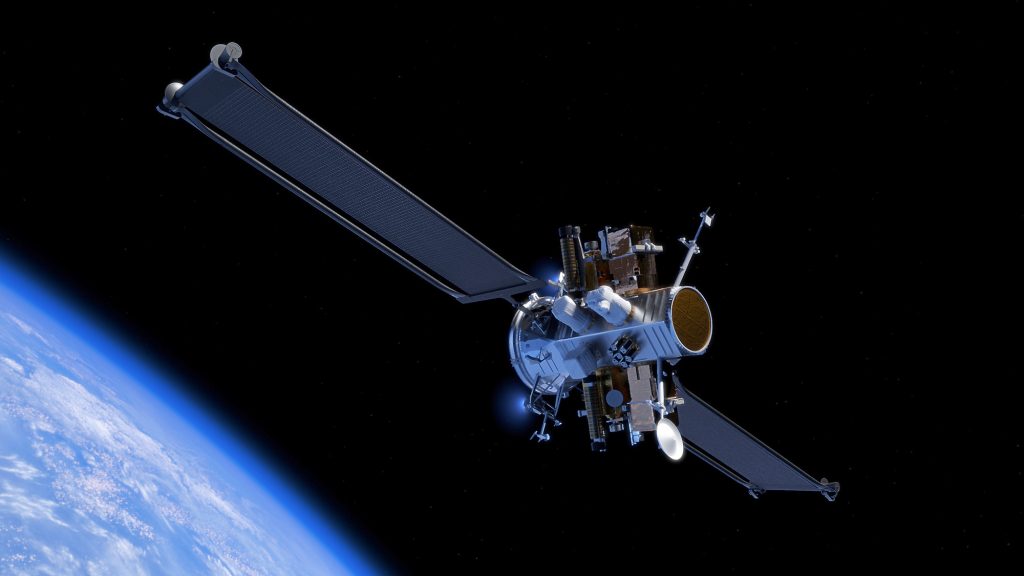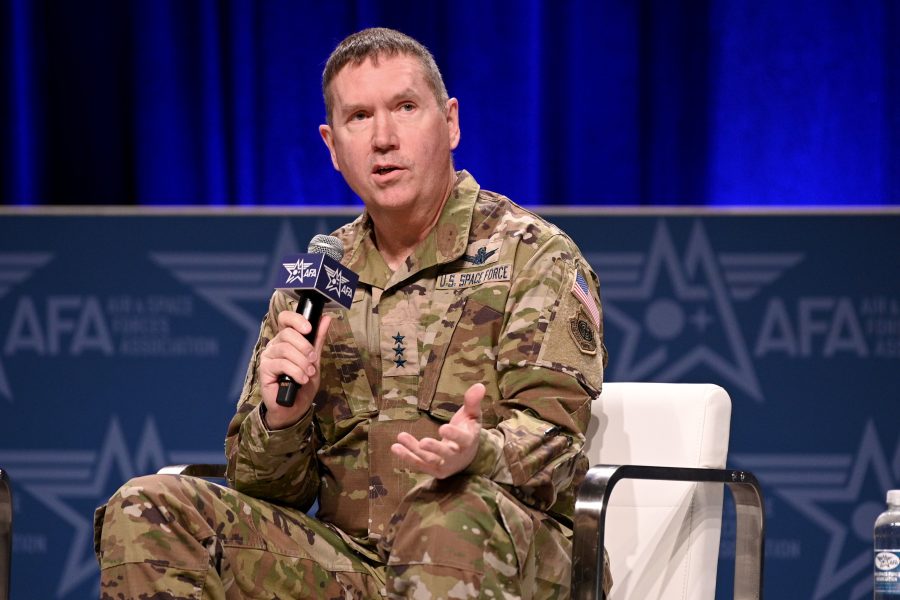RESTON, Va.—Lt. Gen. Shawn Bratton, the Space Force’s chief planning officer, will lead the project to stand up Space Futures Command, USSF’s fourth and newest Field Command, with the goal to reach initial operational capability before the year is out.
A “task force” of roughly 10 to 15 people will form this summer to help Bratton, who previously established and stood up Space Training and Readiness Command (STARCOM) beginning in August 2021.
That experience “nearly killed me,” Bratton joked, but it also armored him for the task ahead he said at the National Security Space Association conference on Feb. 27. Space Futures Command, introduced conceptually Feb. 12 by Chief of Space Operations Gen. B. Chance Saltzman at the AFA Warfare Symposium, will be responsible for understanding the future space operating environment and the technologies and capabilities necessary to ensure the U.S. maintains its operational advantage in the domain.
“I’m already pulling the team in place,” Bratton said. “This really is the benefit of the STARCOM experience. … The way we really did the whole Space Force, there was a task force, Task Force Tango we called it, that did all the thinking, and we followed that model for STARCOM: get about 10 or 15 people in the room, and have them figure it all out.
“So I think I’ve got the 10 to 15 people that will be in place here by the beginning of summer,” he added. “Some have to finish commands and jobs that they’re in. And I’ve got them a place to work, and then they’ll be up and running.”
Compared to STARCOM, Space Futures Command will involve more “pulling it together” than “building from scratch,” Bratton said.
Achieving rapid capability is his goal: “I think we’ll have the task force in place by the summer. I think there’ll be probably an early IOC this year,” Bratton said. “Gen. Saltzman and obviously the Secretary are worried about … who’s going to be in charge, but I think we’ll have sort of some sort of IOC organization certainly in place this year.”
By contrast, it “took nine months from the day I showed up to the ceremony” to stand up STARCOM. “This is easier than that.”
As Saltzman detailed at the AFA Warfare Symposium, Space Futures Command will be built around three centers:
- The existing Space Warfighting Analysis Center: “We’re not touching SWAC, and that really is the biggest piece of it,” Bratton said.
- A new Wargaming Center: “We have a lot of pockets of wargaming within the community,” Bratton said, including e long-running Schriever Wargame and Space Delta 10 inside STARCOM. Bratton’s team will focus on combining those pieces into a single organization.
- A new Concepts and Technologies Center: This organization will be entirely new, Bratton said.
In addition to establishing the new centers and the command itself, Bratton’s team must also define how Futures Command fits into and connects with the rest of the Space Force structure.
“We have to draw some boundaries between the acquisition community’s responsibilities in this area and what does futures do, how do they influence investment in technology through priorities,” Bratton said.
Looking five to 15 years beyond the horizon, Space Futures Command will be chartered to ensure the Space Force is investing in and developing the right technologies and capabilities necessary not only to counter emerging threats, but to impose greater complexity and challenges for potential adversaries. That includes things like artificial intelligence, cislunar space, and in-orbit refueling, all of which would necessarily alter the calculus for rivals.
“Those are concepts right now that maybe haven’t been proven all the way through to military utility,” Bratton said. “We should be experimenting and doing demonstrations, and we are. Then, what process do we run that through to make a definitive or at least a sort of analytical assessment of military utility? I need to produce some analytics that show, through wargaming, through thousands of iterations of a war game, [what] difference that capability makes in the fight.”

